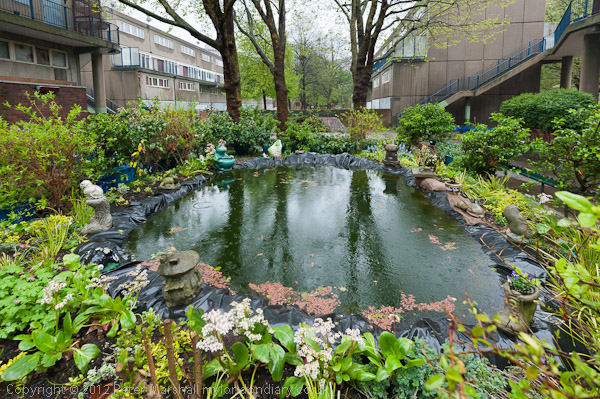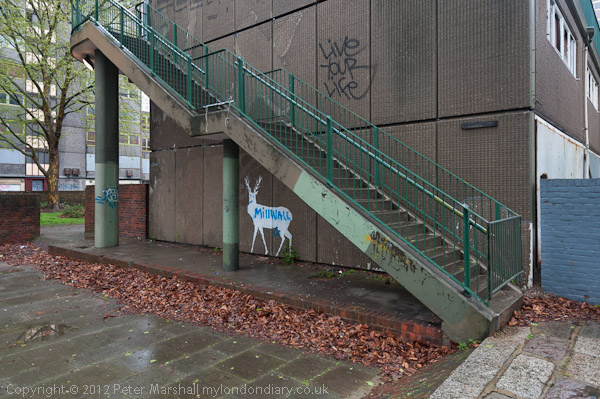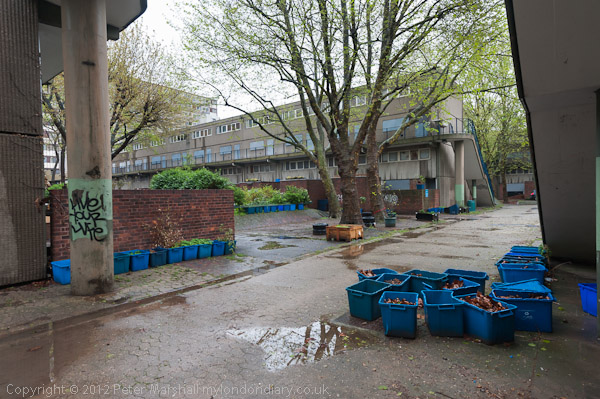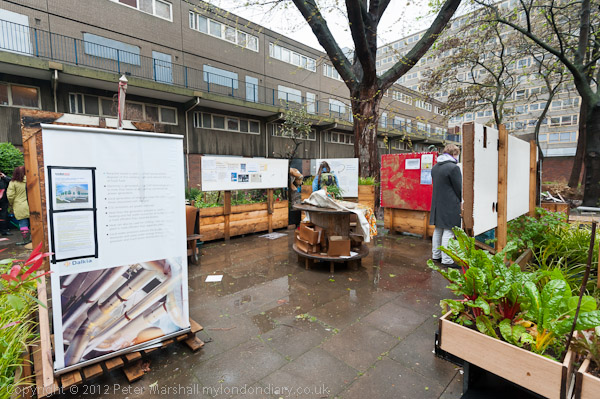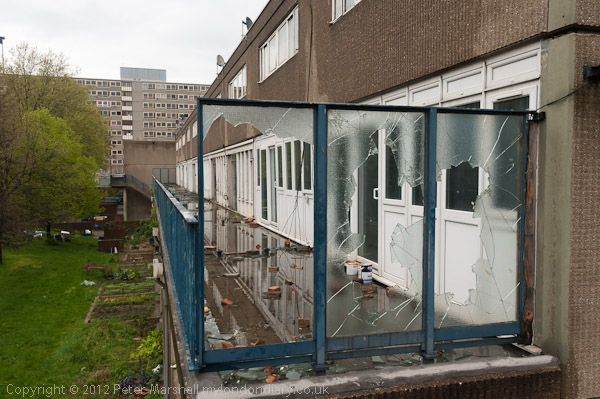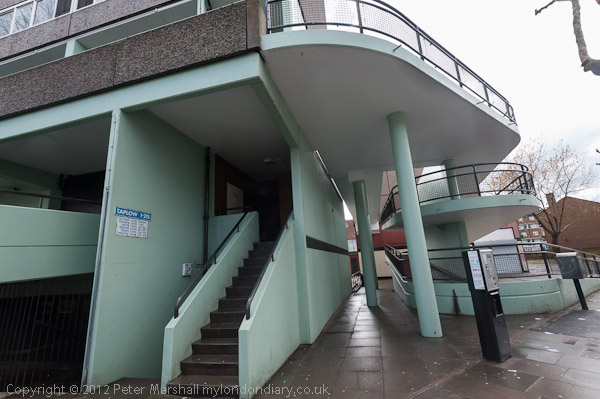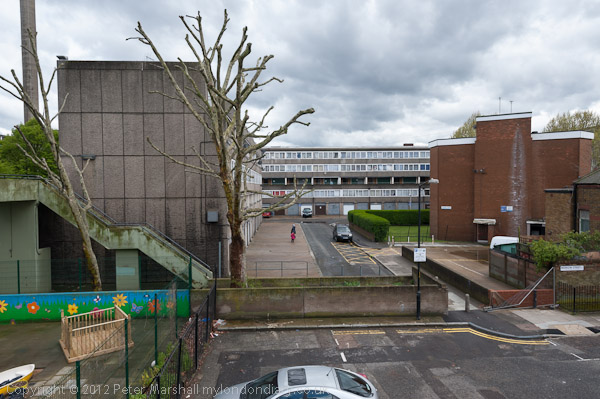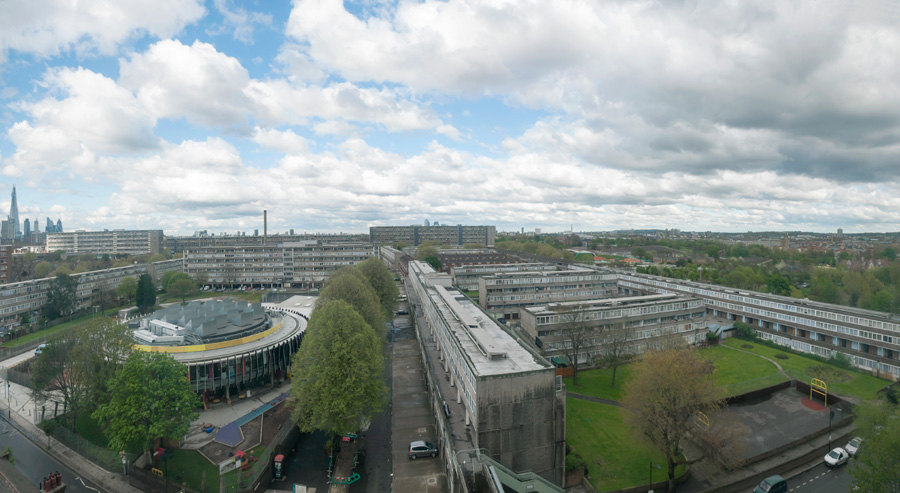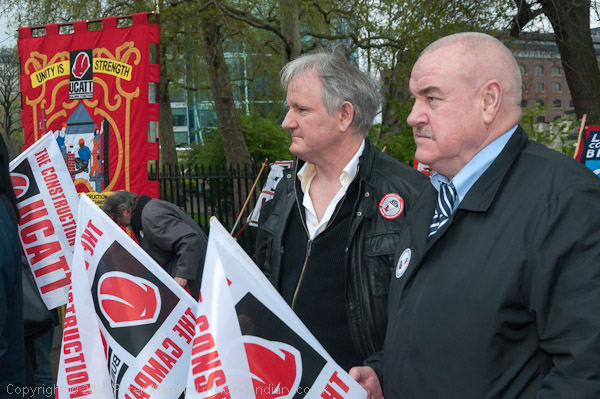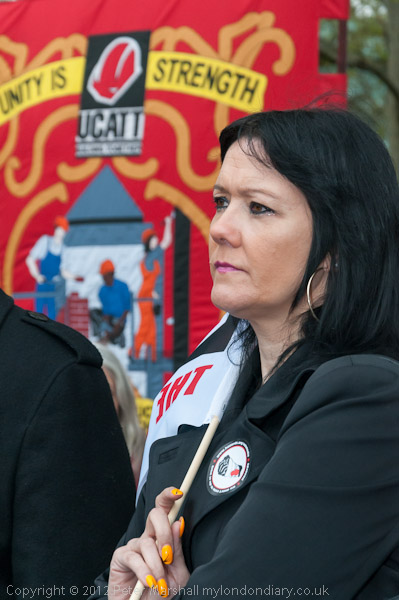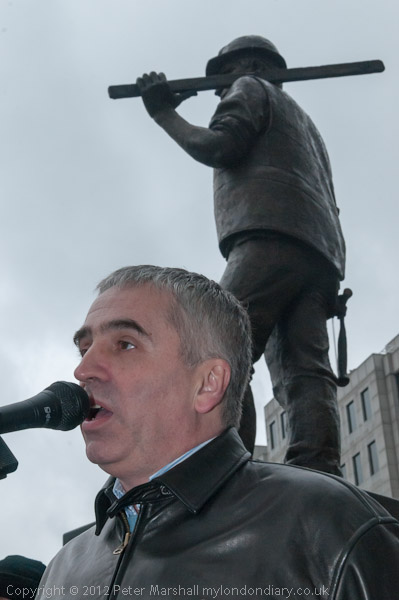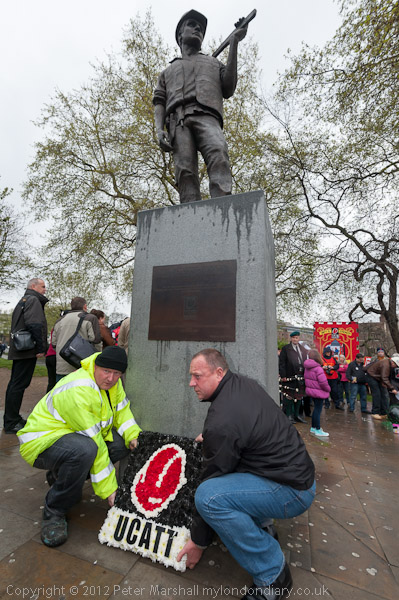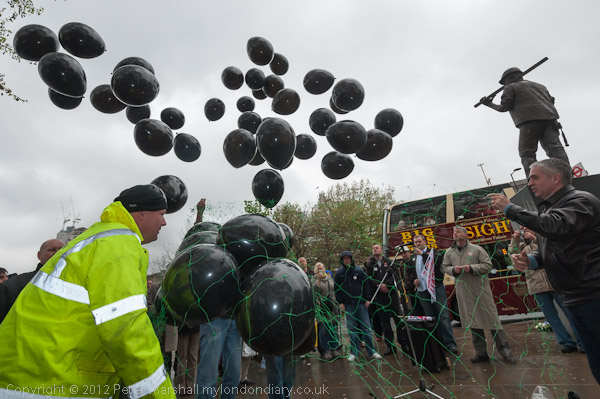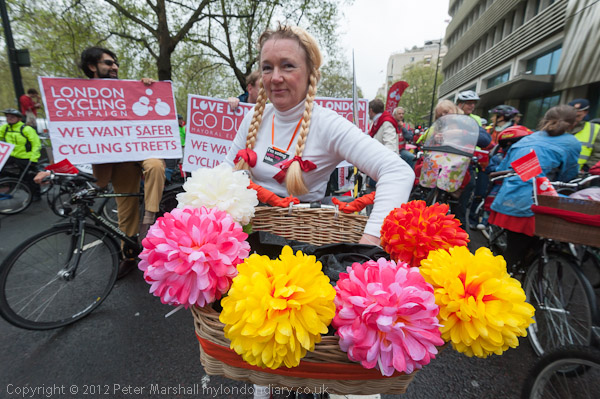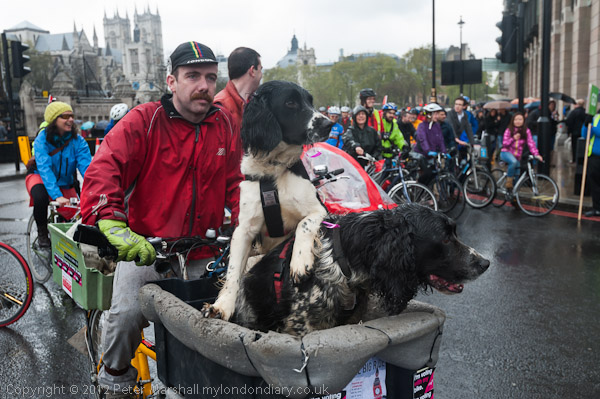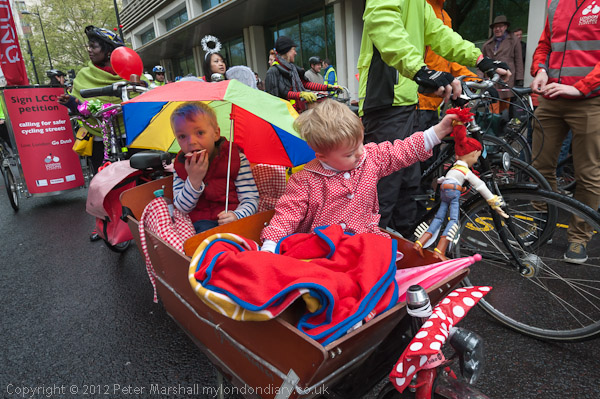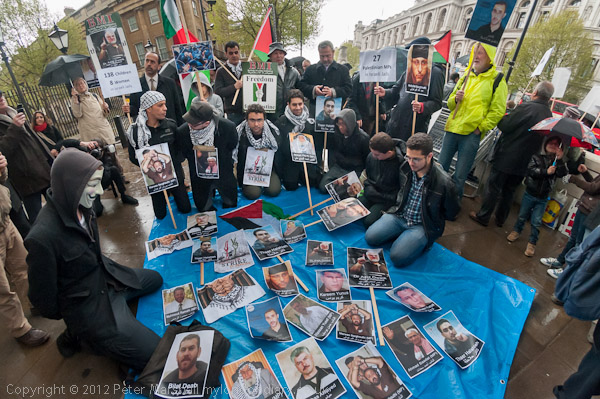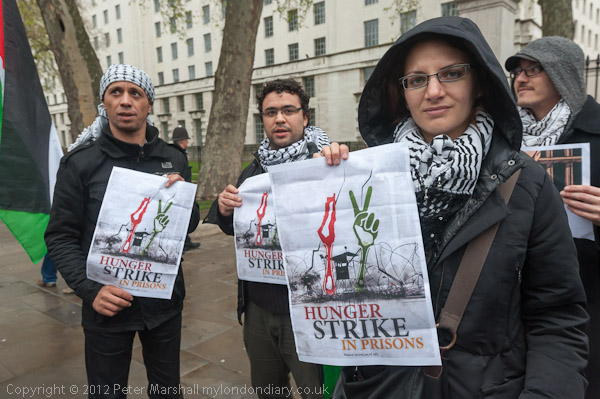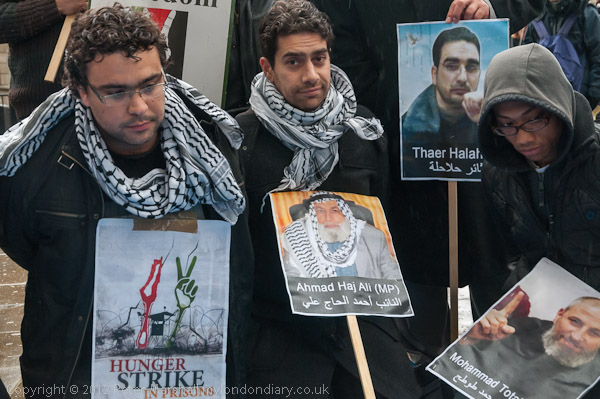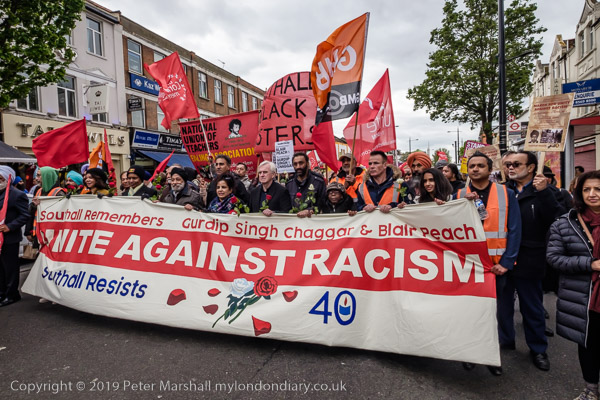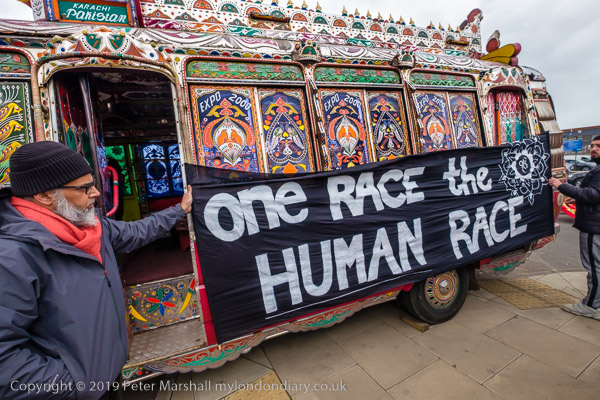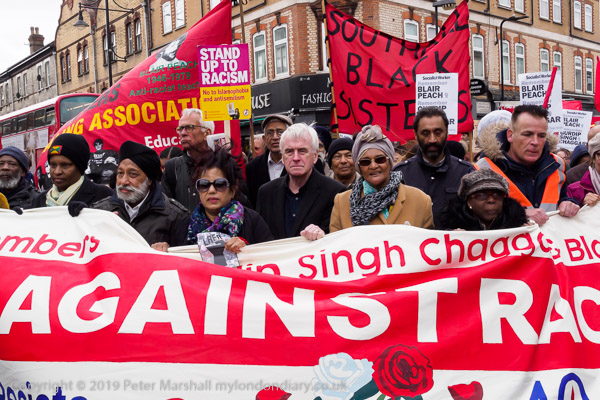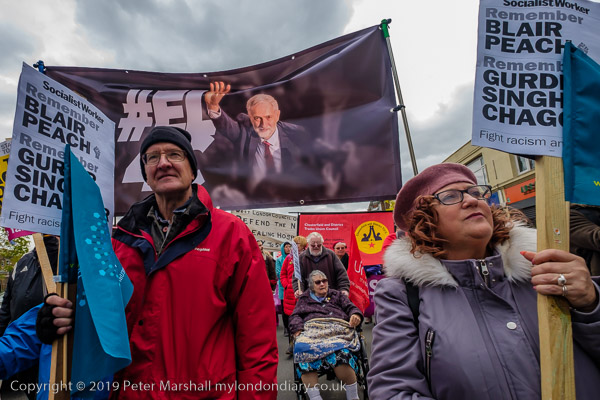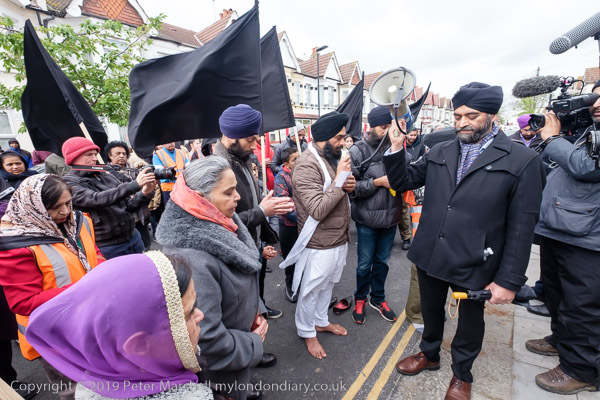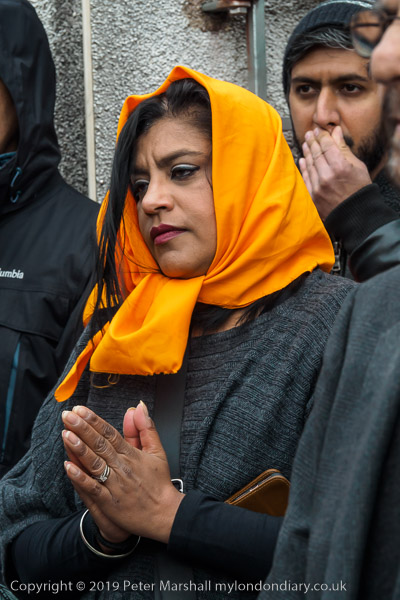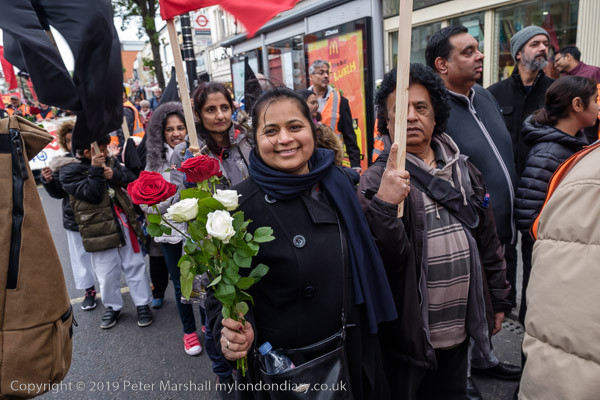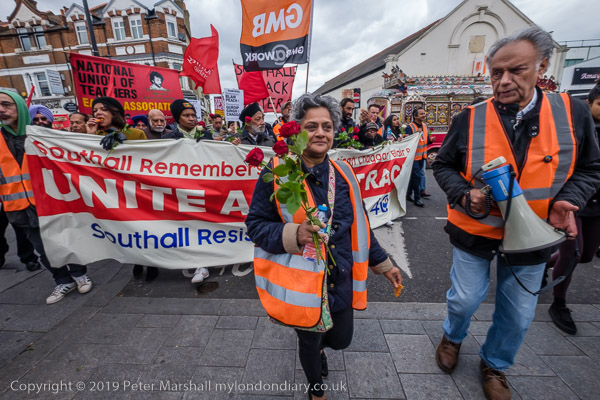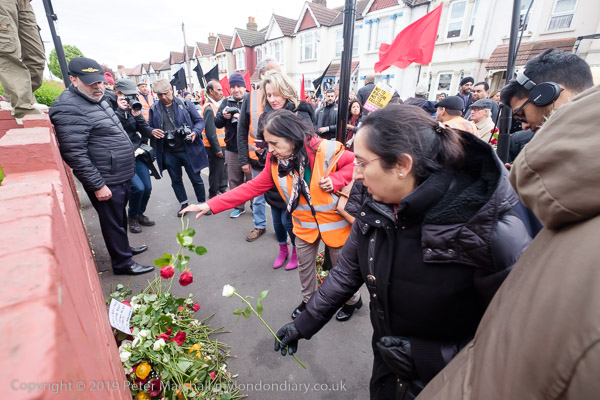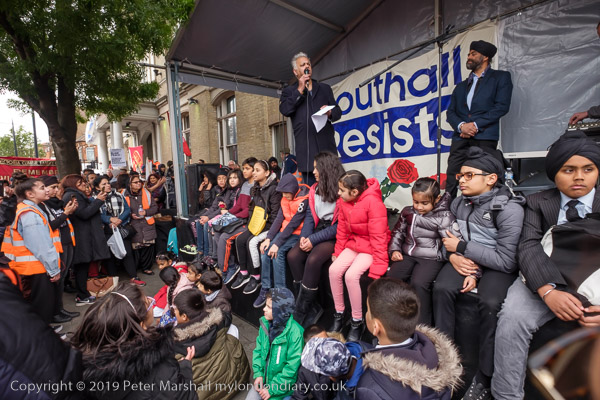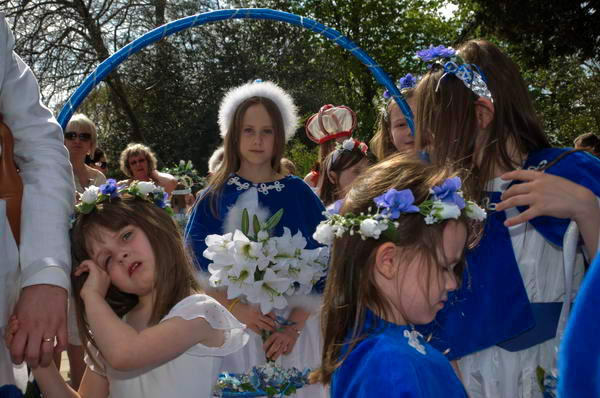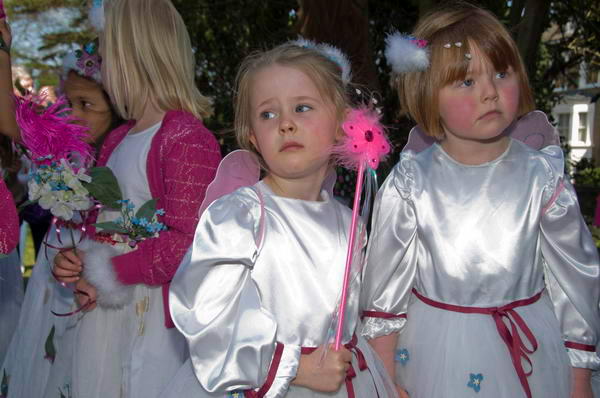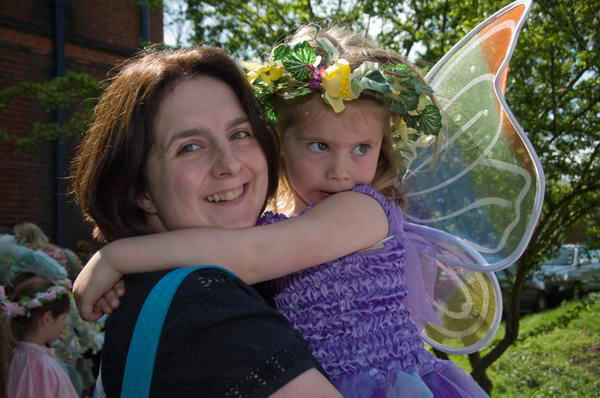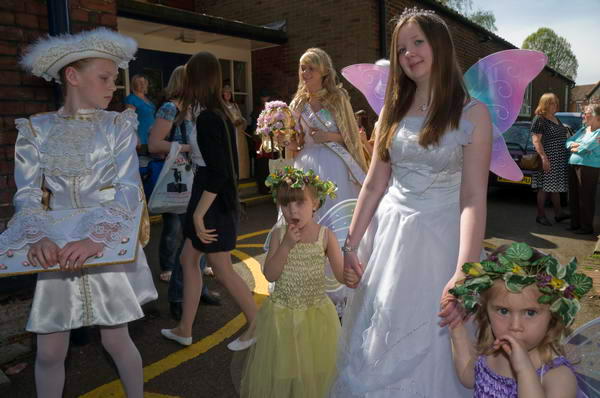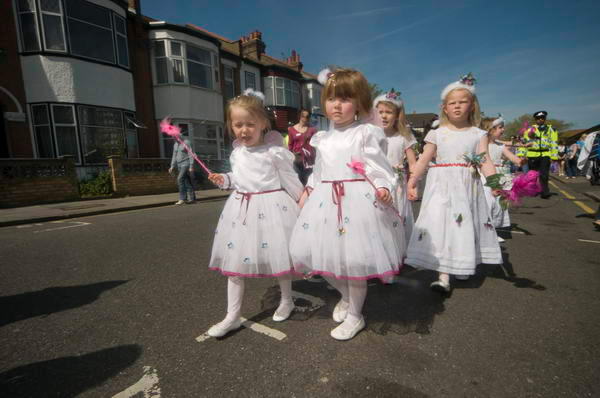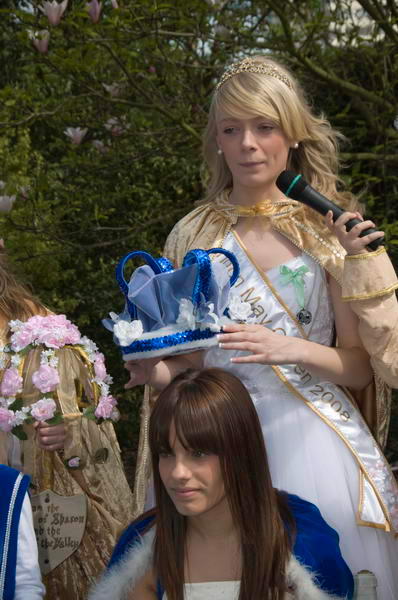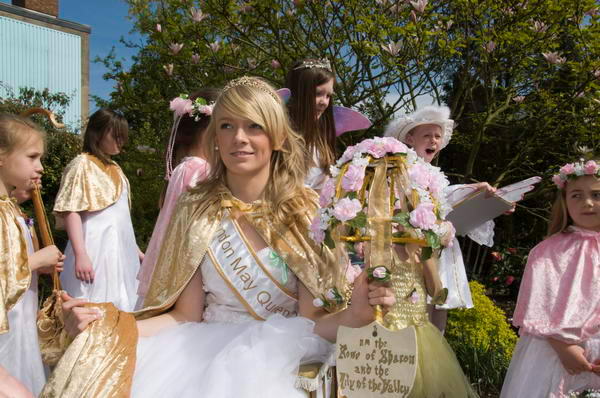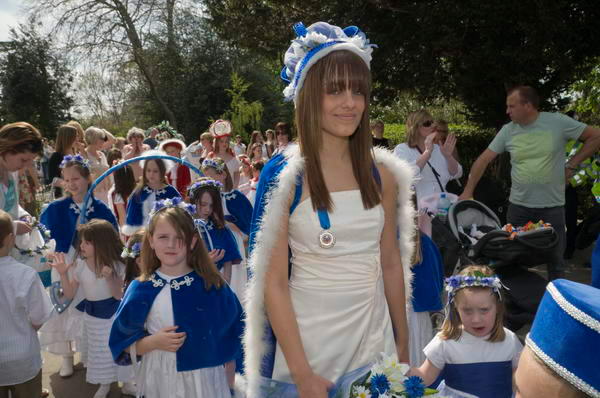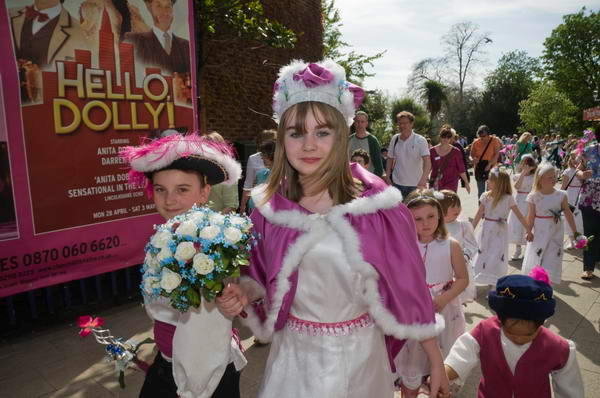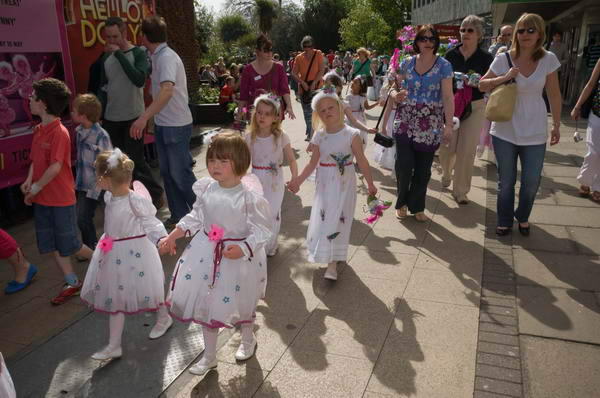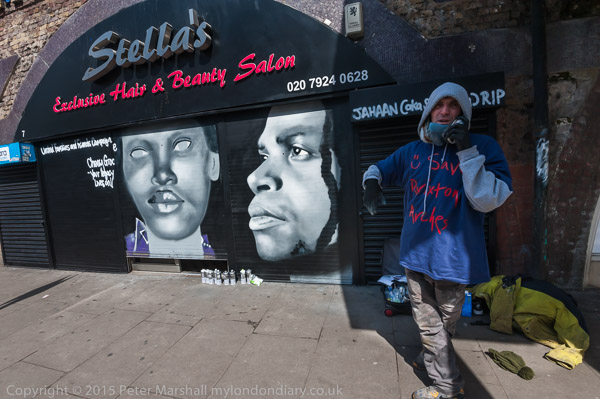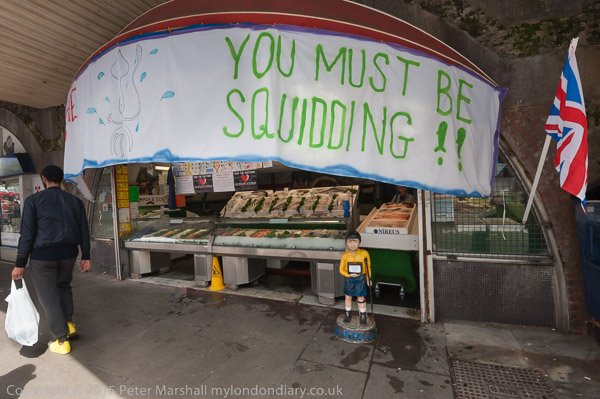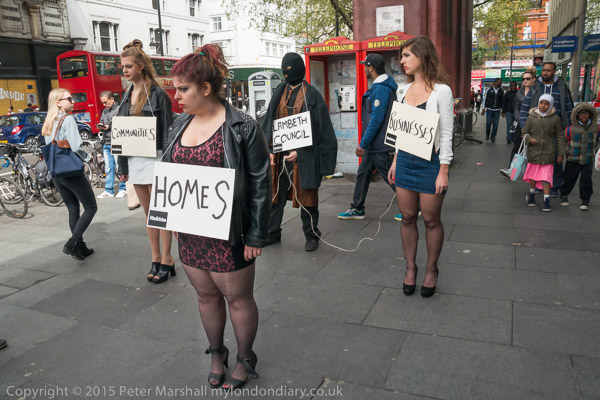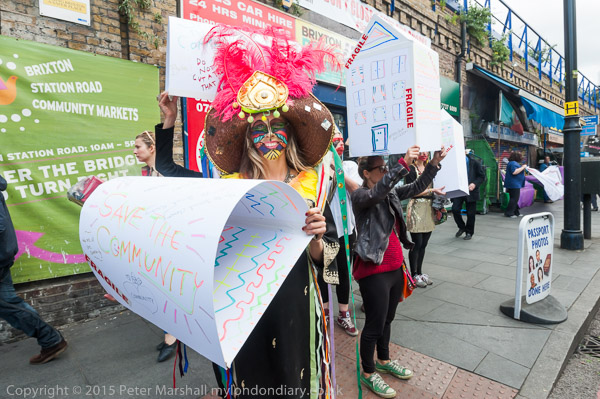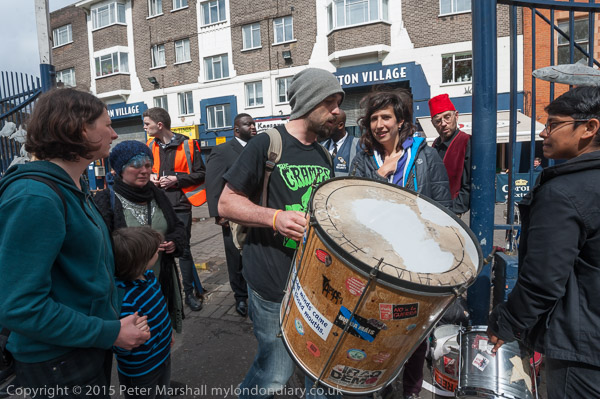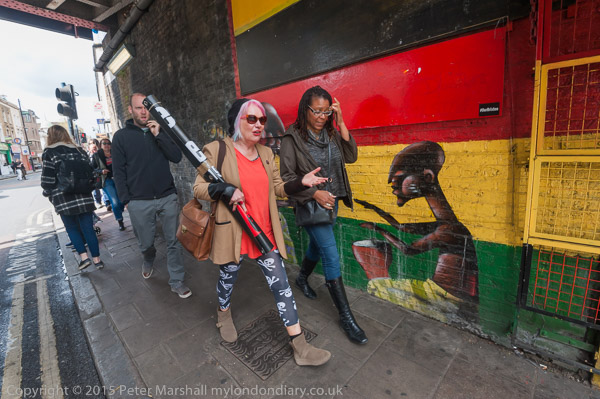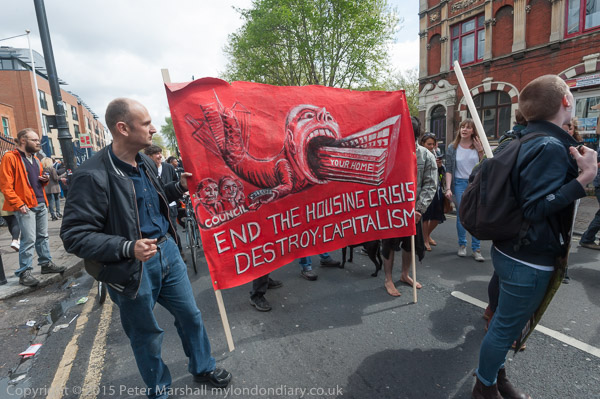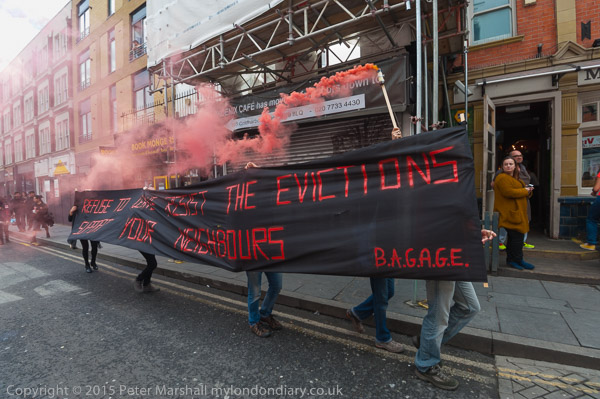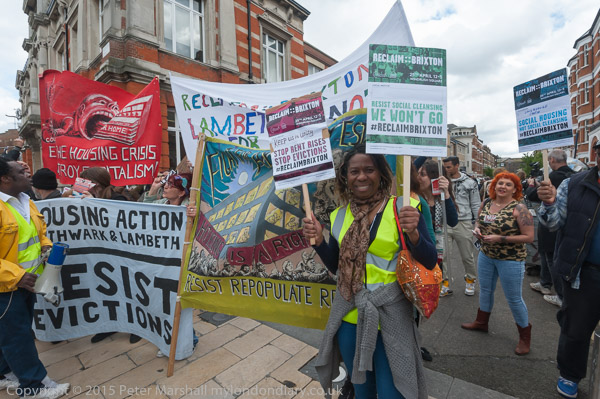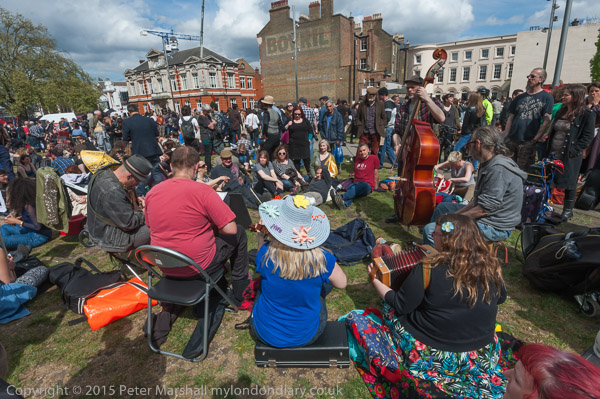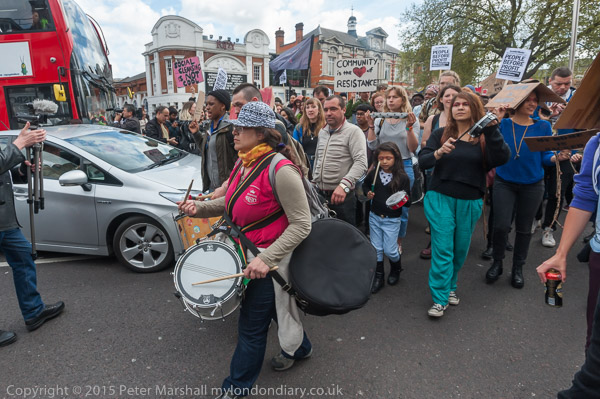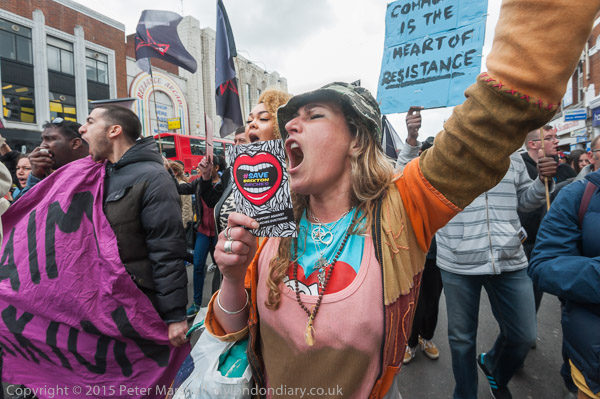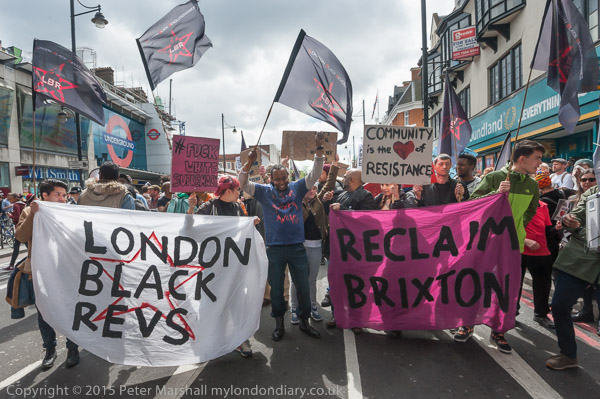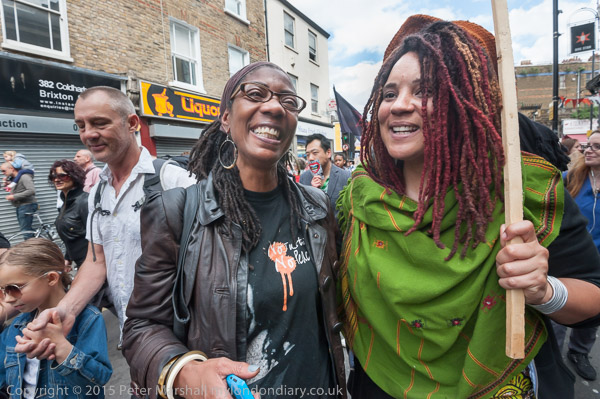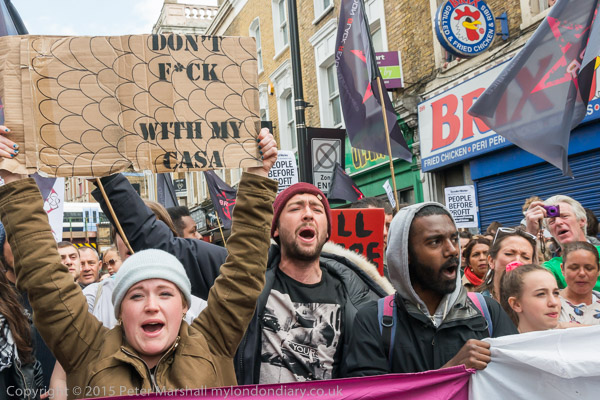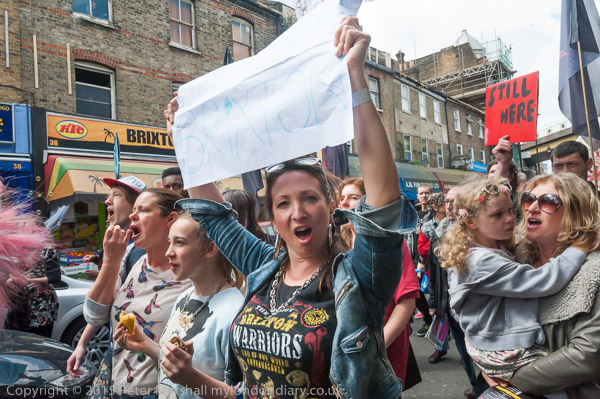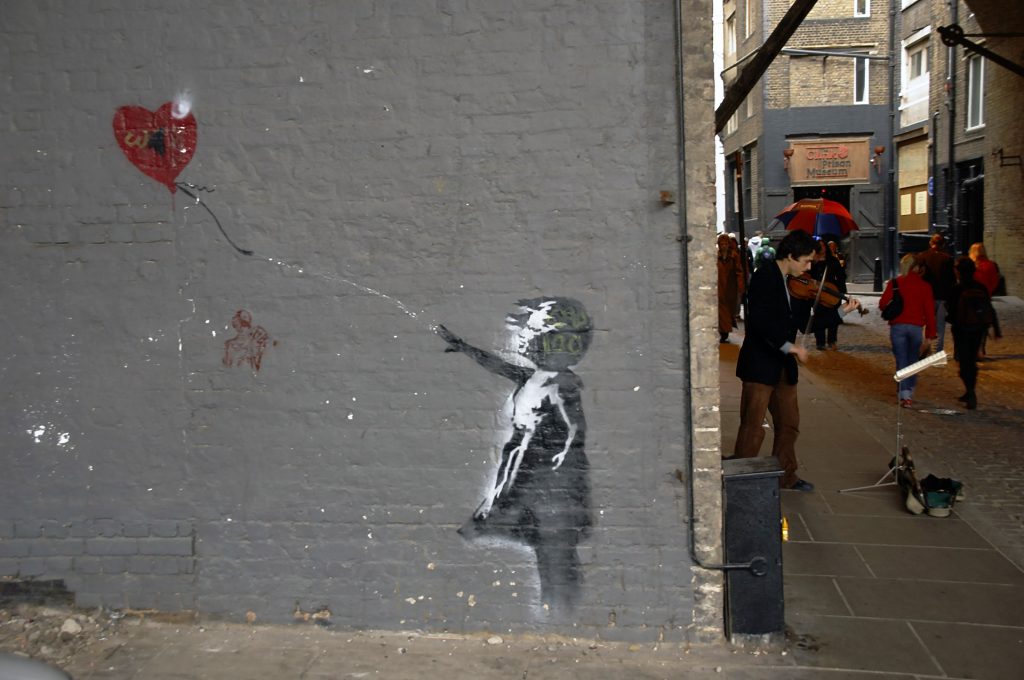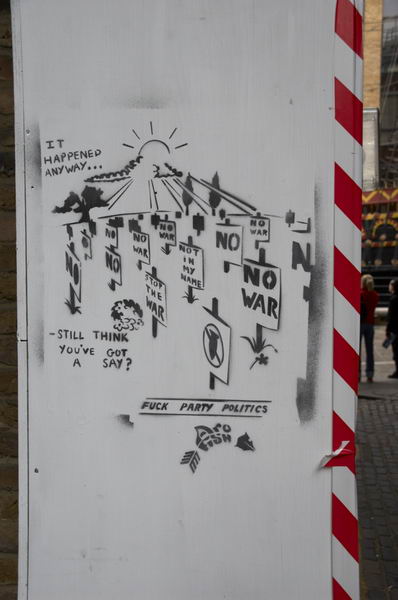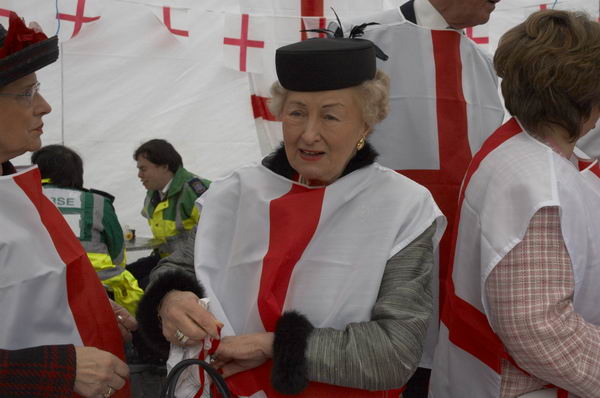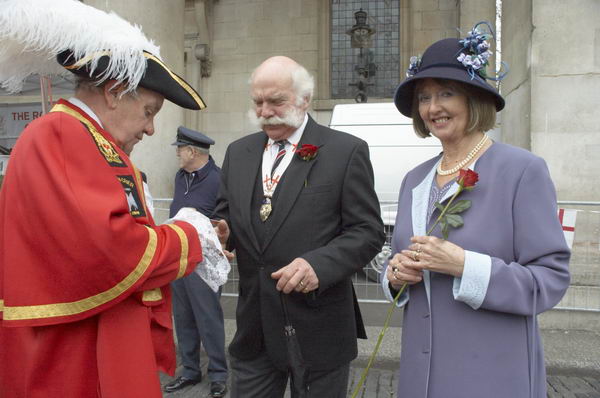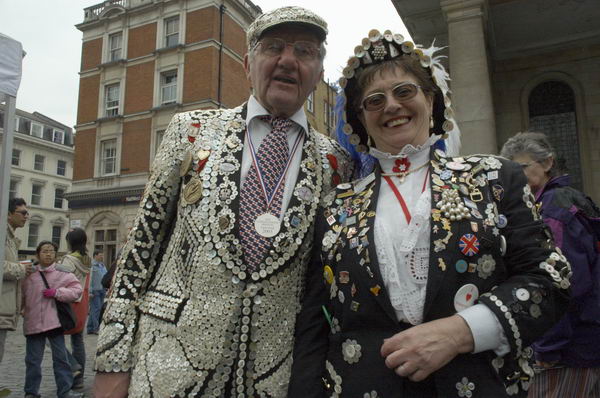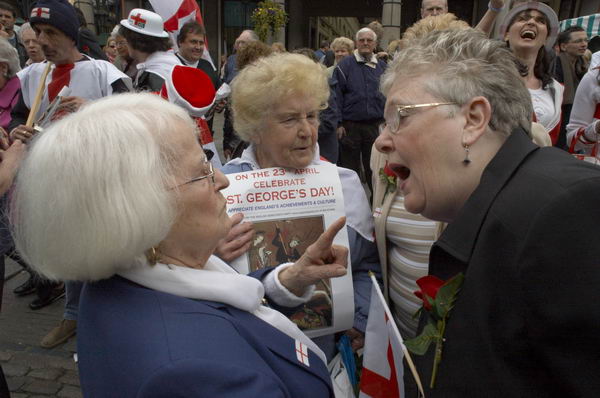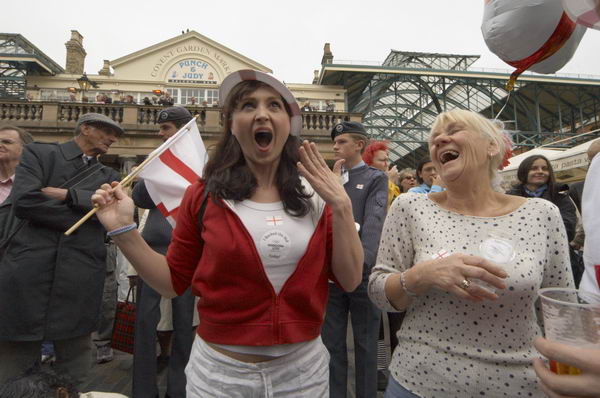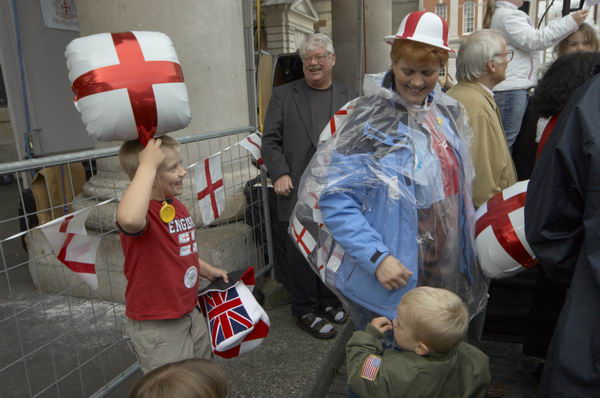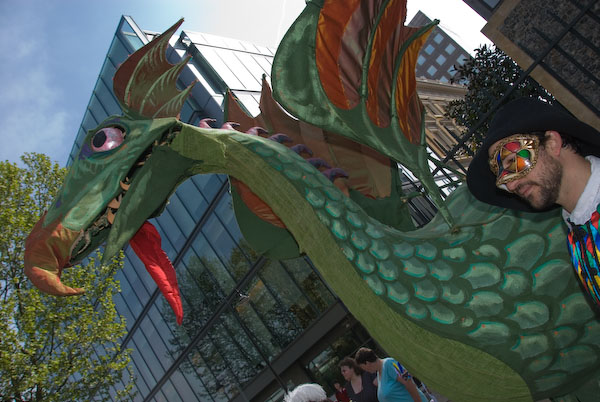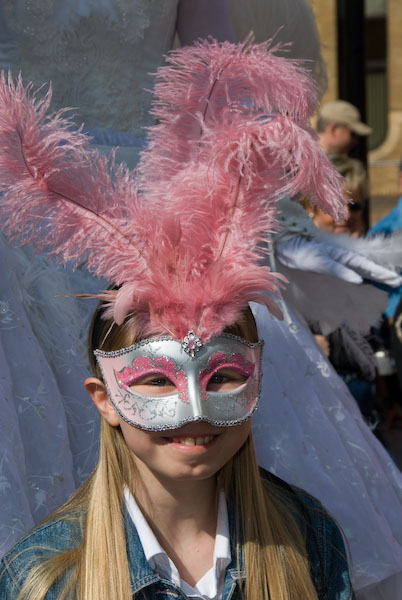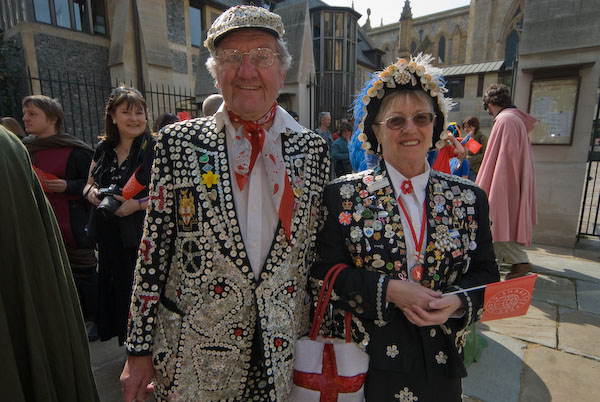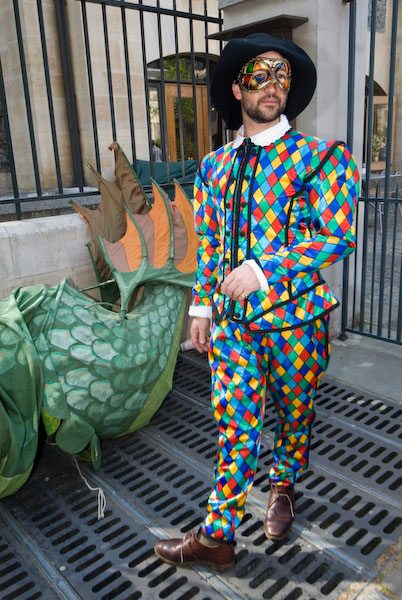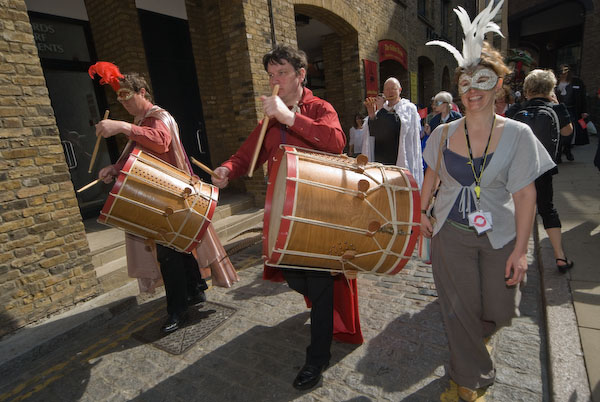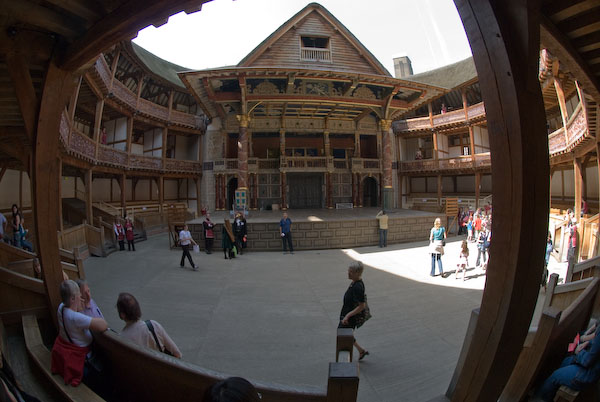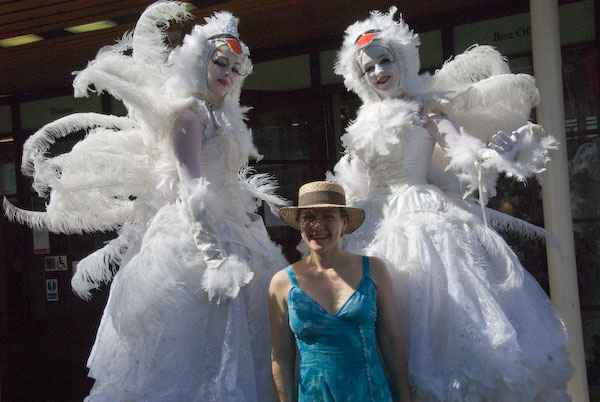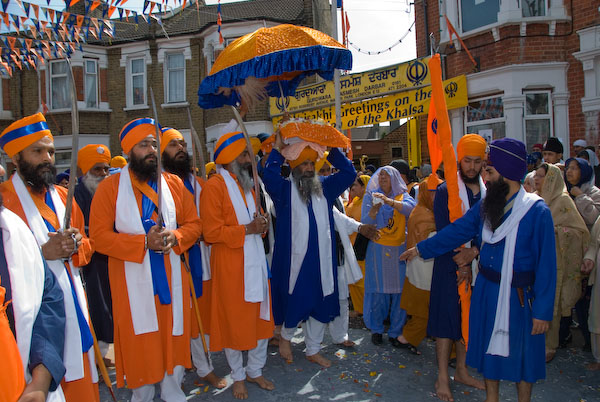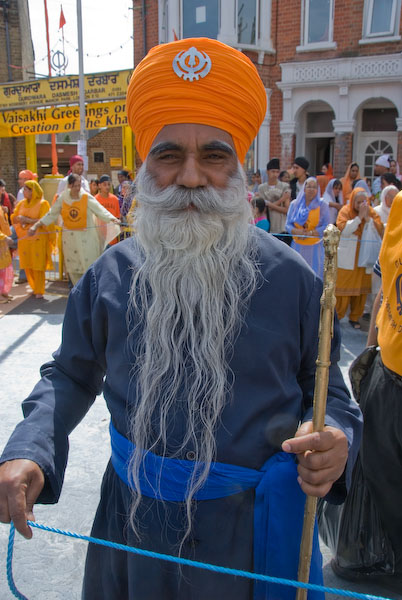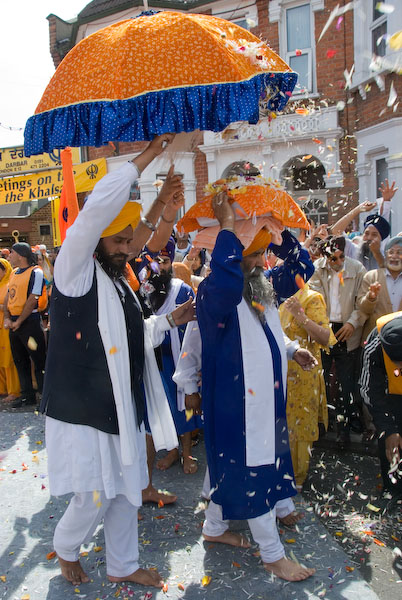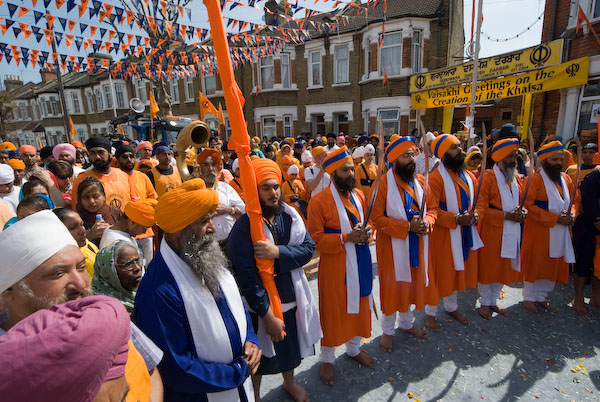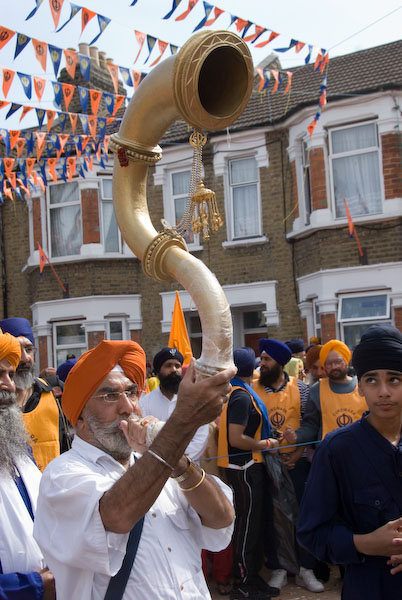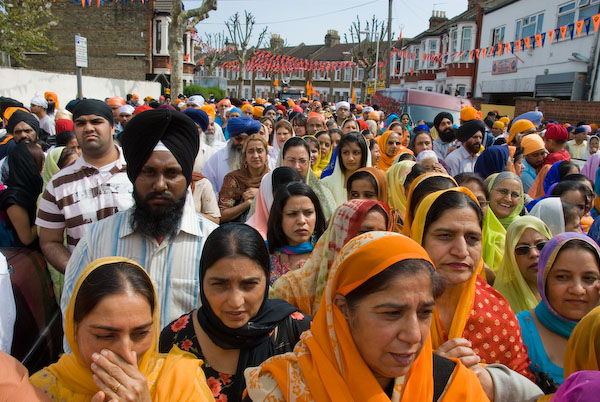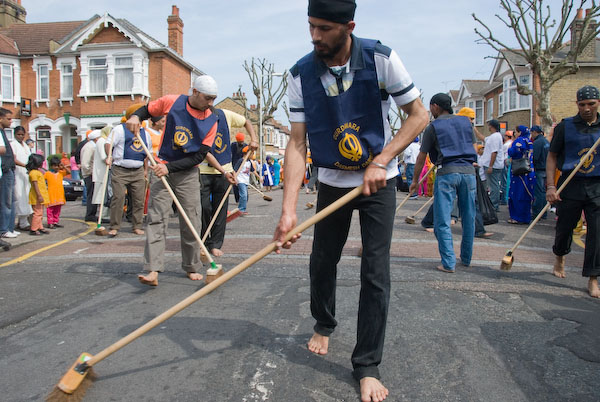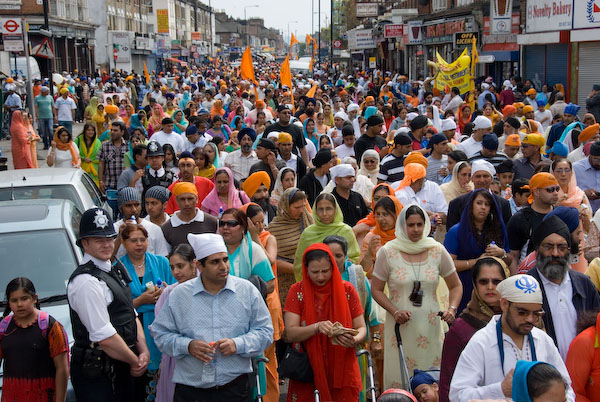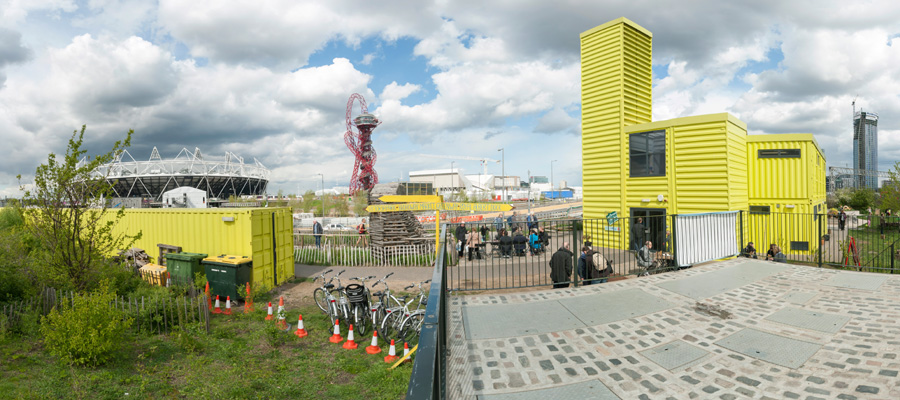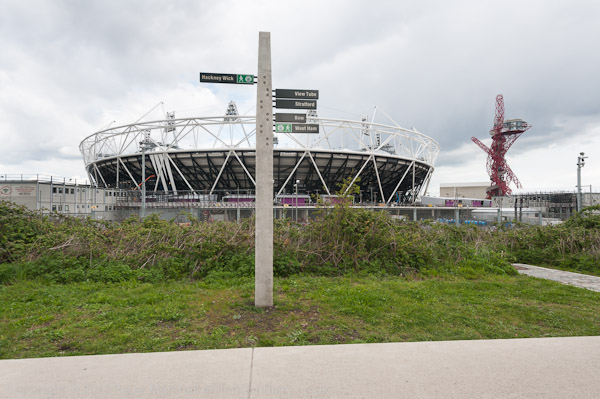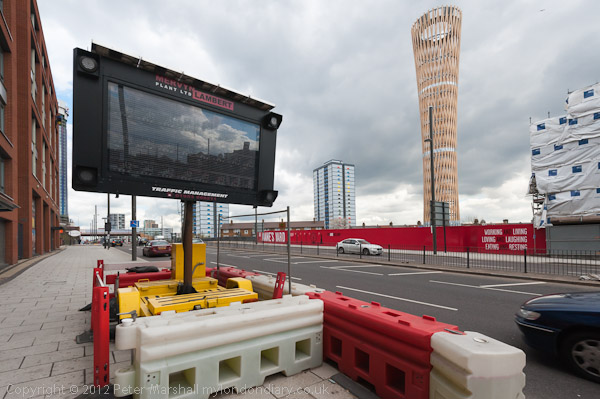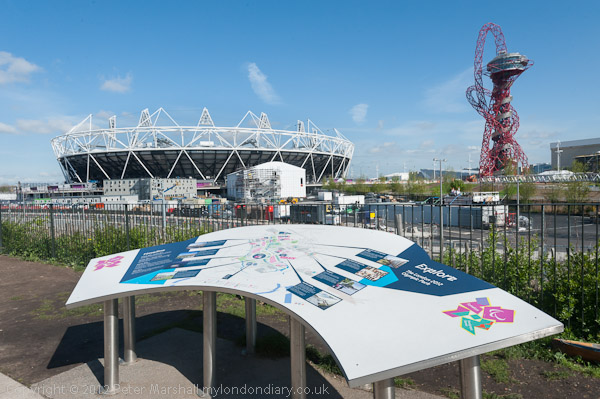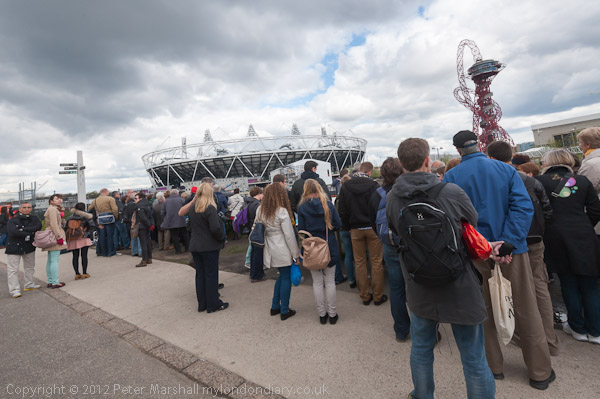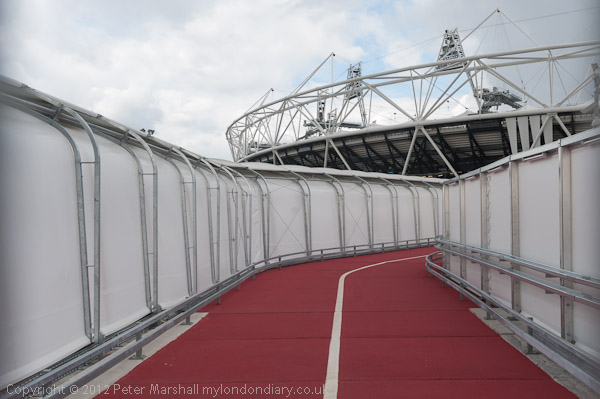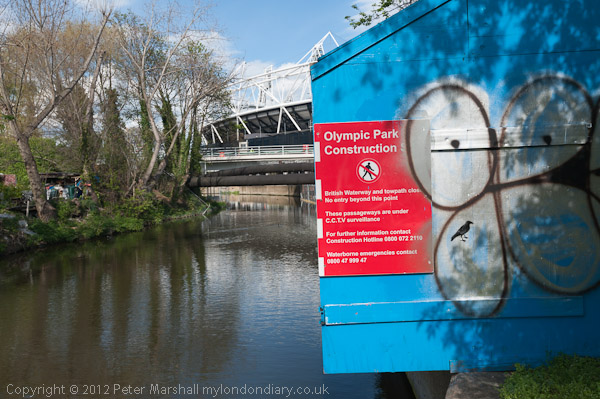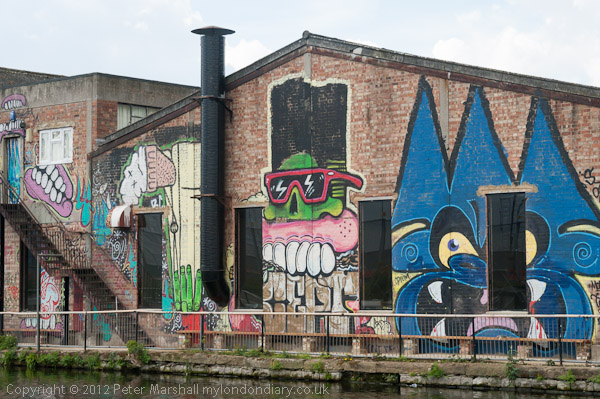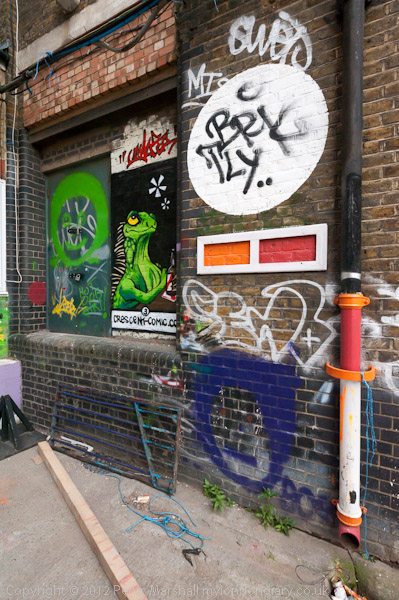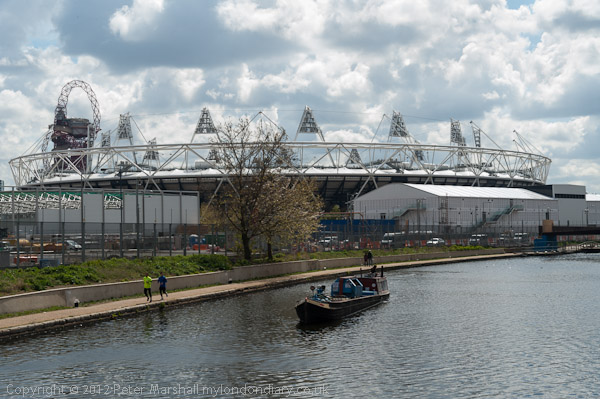Brighton MayDay Protest & Party – On Saturday 30 April 2011 I had a day out in Brighton, not with my bucket and spade on the beach but photographing an early May Day Protest against the cuts, bankers, tax dodgers and those damaging the environment and the local community.
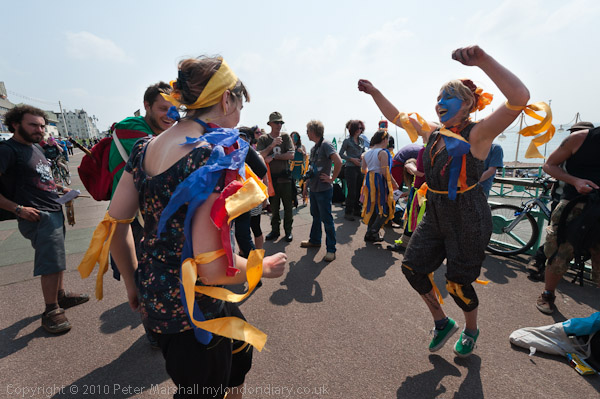
It was a protest organised deliberately without consultation with the police, essentially a succession of static protests at a number of locations around the city in random order, selected by the throwing of a large dice.
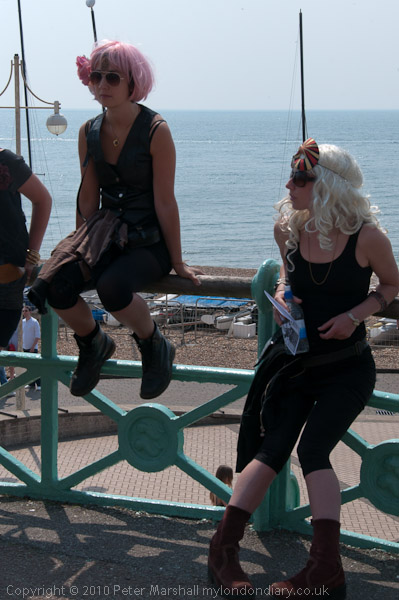
Even the meeting point for the day was a closely kept secret and only revealed as I arrived in Brighton half an hour before the event was due to start, posted on Twitter, Facebook and a mobile number.
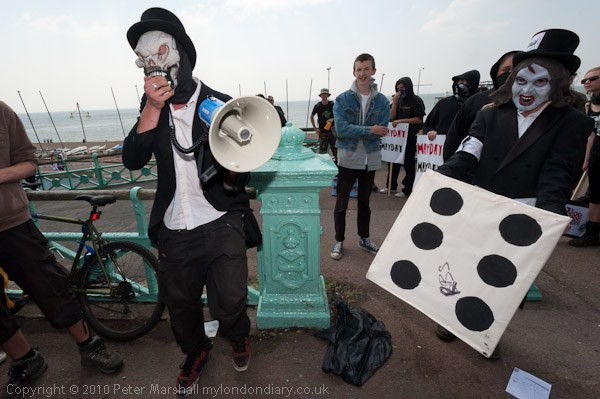
I arrived to join around a dozen other photographers and a couple of plain clothes police watching around the same number of protesters, but had passed several police vans and a couple of officers on police horses just a short distance away.
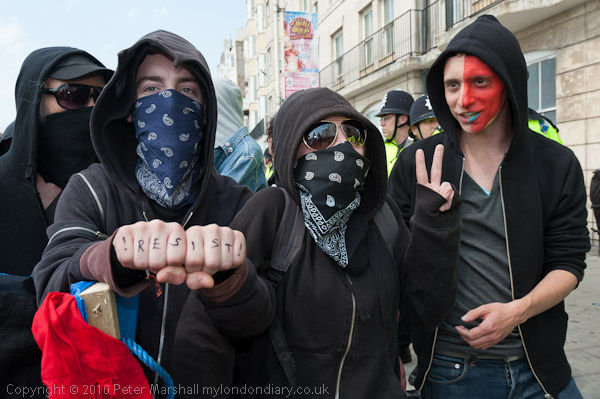
The protesters handed out a map of Brighton marked with 27 possible targets including arms manufacturers EDO MBM/ITT some way out in Moulscomb and Thales, several branches of Barclays, the UK’s largest investor in the arms trade, an armed forces recruitment centre and Marks & Spencer’s who support Israel by buying goods from illegal Israeli settlements. Other shops on the list included notable tax dodgers Vodaphone, Boots and the various Arcadia group brands – Topshop, BHS, Burton, Dorothy Perkins. Accused of damaging the environment were RBS who invest hugely in the area, Shell, particularly for their Rossport pipeline in Ireland, BP for their exploitation of tar sands, E.ON for coal fired power stations and Veolia. Other targets named included Brighton Town Hall, Tescos, Sainsburys and Starbucks, Fox & Sons involved in illegal evictions, Beyond Retro who sell fur and also two properties owned by the notorious Nicholas Van Hoogstraten.
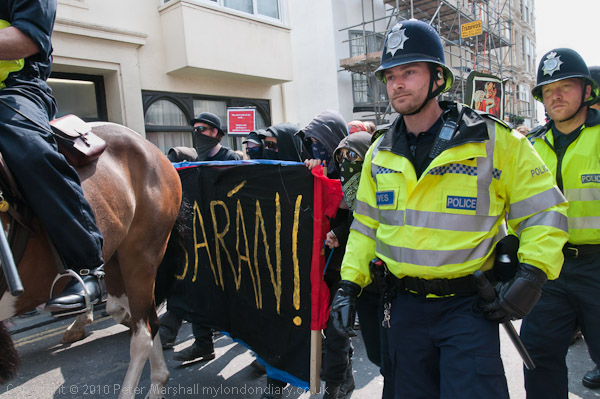
At 12.30, by which time rather more protesters had arrived, a giant dice was thrown and came down on 4 which meant we were heading to Brighton Town Hall and the protesters set off, accompanied by the police and the two horses.
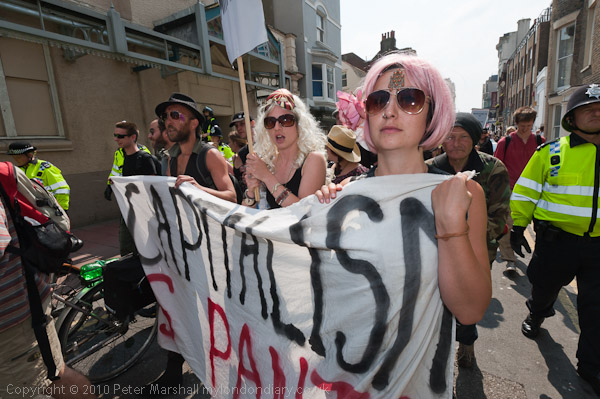
But although the protesters were clearly in carnival mode, the police were not and soon were stopping and harassing them.
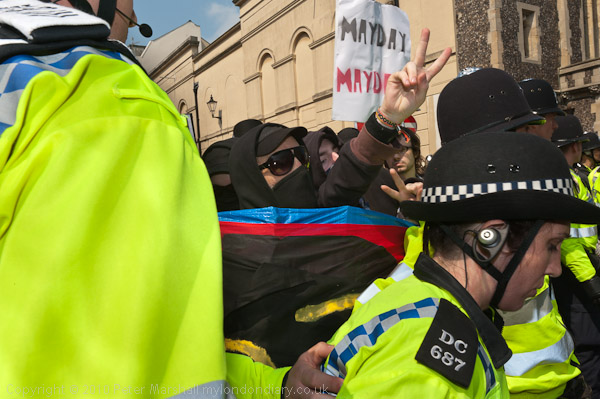
They grabbed a few protesters apparently more or less at random and there were some minor scuffles as police kettled the protest in Duke Street for around 40 minutes.
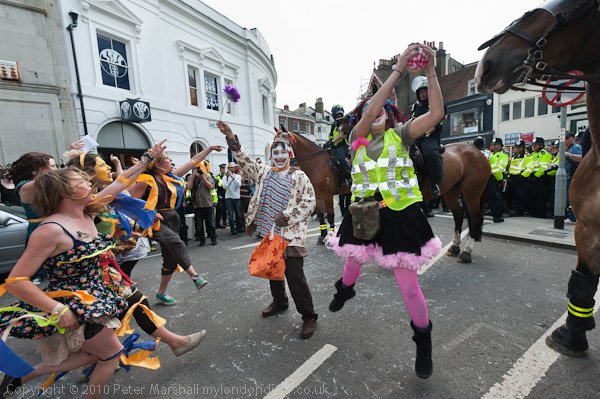
The protesters danced while some tried to negotiate with the police and finally they were allowed to move off to hold a rally outside two banks with speeches about the cuts and handouts to bankers.
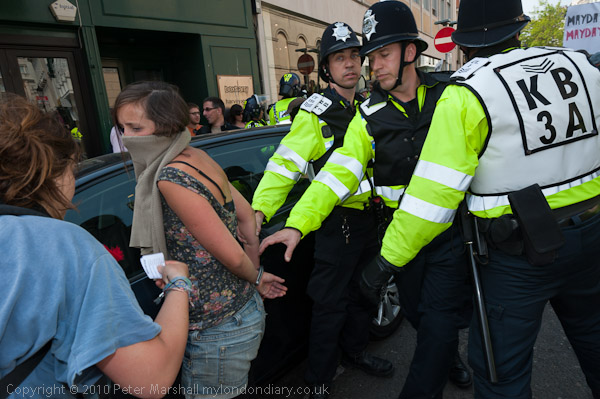
The protesters then tried to walk into the Pavillion Gardens, a few managing to do so before police decided to block the gates. There were a few more incidents and a couple of arrests, but after around 20 minutes the officer in charge decided there was really no reason why they should not walk through the gardens – and they did, to the cheers of those sitting on the grass and enjoying a picnic.
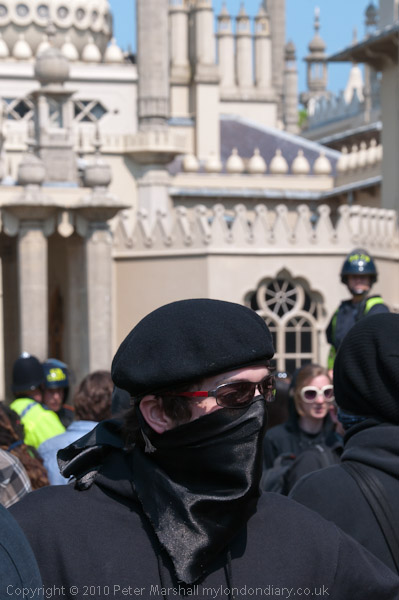
Police continued to chase the protesters around Brighton for the next couple of hours, though they seemed to be going around in circles and making occasional sudden changes in direction to leave the police – some of whom were noticeably less fit than the protesters or even the photographers – behind.
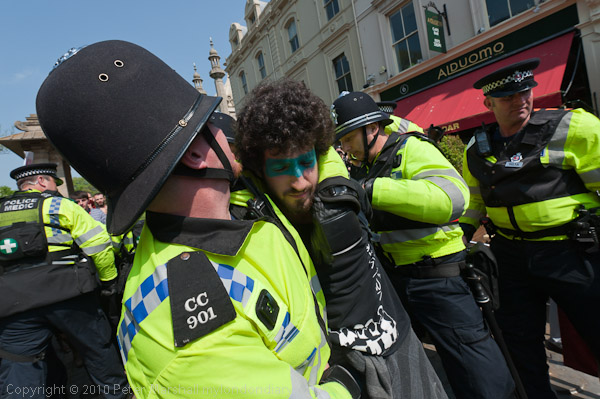
Police made at least one more arrest and the protesters eventually returned to the promenade where some sat down on the road. For the first time there was a clear message from the police that they would be kettled unless they got up, and they did, running up the hill again (with another arrest for no clear reason) before returning to party on the beach.
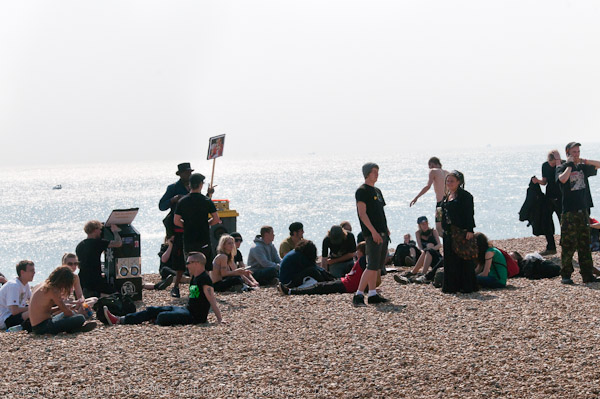
I rather doubt if any of those – at least 8 – arrested on the day ended up being charged, let alone convicted. The police were clearly totally confused by the event, and their response, particularly the use of police horses in some very restricted areas, put both protesters and public at risk. But I think also that the protesters rather failed to convey clearly to the people of Brighton their concerns. Perhaps and more organised series of rallies outside a more selected group of targets would have been more effective.
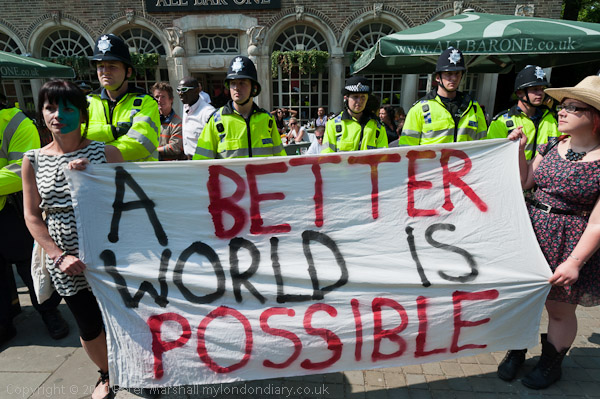
More detail about the protest and many more pictures on My London Diary at Brighton MayDay Protest.
Flickr – Facebook – My London Diary – Hull Photos – Lea Valley – Paris
London’s Industrial Heritage – London Photos
All photographs on this page are copyright © Peter Marshall.
Contact me to buy prints or licence to reproduce.
